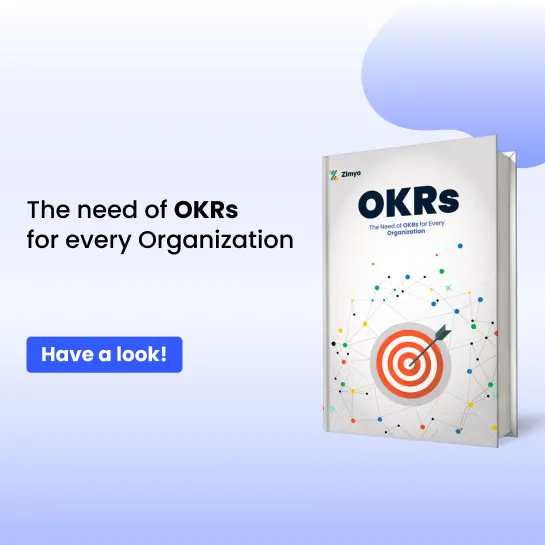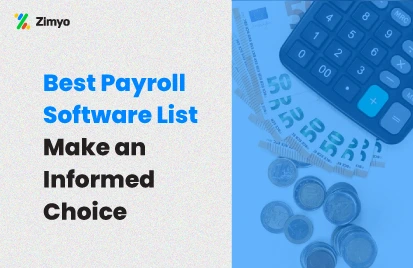Managing payroll manually in a fast-paced business environment is like using a typewriter in the age of laptops – inefficient, error-prone, and time-consuming. That’s why automatic payroll is a game-changer when it comes to payroll processing and compliance.
With the rise of digital transformation in HR, companies are increasingly adopting automated payroll systems to streamline their payroll processes. From reducing errors to enhancing compliance and employee satisfaction, payroll automation offers a wide array of benefits that modern businesses can’t afford to ignore.
In this blog, we’ll explore what automatic payroll is, how it works, and the top benefits it brings to your business.
What is Automatic Payroll or Payroll Automation?
Automatic payroll refers to the use of software to manage and process employee payments with minimal human intervention. It automates tasks such as salary calculations, tax deductions, direct deposits, and payslip generation.
Unlike traditional methods, auto payroll systems pull data from integrated platforms like time tracking and attendance software, reducing manual data entry and human error.
These systems form a critical part of the modern payroll management system, ensuring that employees are paid correctly and on time every single cycle.
Check Out Our Salary Slip Generator.
10 Key Benefits of Automatic Payroll
Let’s dive into the top reasons why businesses are switching to automatic payroll systems:
1. Saves Time and Increases Efficiency
Manual payroll processing can take hours or even days. Automatic payroll processes thousands of transactions in minutes, freeing HR teams from repetitive administrative tasks.
2. Reduces Payroll Errors
Human errors in payroll can result in financial loss, penalties, and unhappy employees. Automated payroll minimizes mistakes by eliminating manual calculations and ensuring data consistency.
3. Ensures Timely Payments
Late payments can damage employee trust and morale. Auto payroll systems ensure timely disbursal of salaries by scheduling payments in advance.
4. Automates Tax Calculations and Compliance
Tax laws are complex and ever-changing. A reliable payroll automation system ensures accurate tax deductions, TDS filings, and statutory compliance, helping businesses avoid penalties.
5. Enhances Data Security
Modern payroll systems come with encryption and role-based access controls, ensuring that sensitive employee data remains secure and confidential.
6. Improves HR Productivity
When payroll is automated, HR teams can focus on more value-driven activities like employee engagement, learning & development, and performance management.
7. Real-time Payroll Insights and Reports
With a cloud-based HR payroll system, businesses can access real-time analytics on payroll expenses, tax liabilities, and cost centers, enabling smarter decision-making.
8. Scalability for Growing Businesses
As your workforce expands, the complexity of payroll increases. Automated payroll systems can easily scale with your business without increasing the workload on HR teams.
9. Integrates with Attendance and Leave Management
A good payroll management system integrates seamlessly with attendance, leave, and time-tracking software, ensuring accuracy in payout without double entry.
10. Better Employee Experience with Self-service Portals
Many automated payroll systems come with employee self-service portals where staff can download payslips, check tax deductions, and update their personal details, improving transparency and trust.
Use Our Online TDS Calculator.
How Does Payroll Automation Work?
Payroll automation leverages HR tech platforms to collect, calculate, and process payroll. Here’s a basic breakdown of how it works:
- Data Collection: Attendance, leave records, bonuses, and deductions are automatically fetched from integrated systems.
- Processing: Salary is calculated based on predefined rules, tax rates, and statutory compliance.
- Payout: Salaries are automatically credited to employees’ bank accounts.
- Reporting: The system generates payslips, compliance reports, and audit-ready records.
This seamless automation of payroll not only improves accuracy but also allows HR teams to focus on strategic tasks.
While these tasks may be considered low-value, they can account for a significant portion of a company’s operating budget. EY estimates that between 20% and 60% of full-time employees, costs could be saved by automating such work.
Payroll is a particularly compelling candidate for robotic process automation (RPA). By automating payroll processing, businesses can save time, reduce errors, and free up staff to focus on more strategic tasks. However, setting up an effective RPA system requires careful consideration and planning.
In short, while there are clear benefits to automating back-office tasks, including payroll, it is important to approach automation strategically and thoughtfully to ensure its success.
Upgrade Today!
What are the disadvantages of a manual payroll system?
A manual payroll software is a system in which payroll calculations and processing are performed by hand, without the use of software or technology. While this system may have been sufficient in the past, it has several disadvantages that can have a significant impact on a business’s operations. Here are some of the key disadvantages of a manual payroll system:

1. Time-consuming
Manual payroll processing can be very time-consuming, especially for businesses with a large number of employees. Calculating each employee’s hours, overtime, and deductions by hand can take hours or even days, depending on the size of the workforce.
2. Prone to errors
Manual payroll systems are also more prone to errors than automated systems. Manual methods have a higher risk of calculation mistakes, which can result in incorrect paychecks, tax filings, and other payroll-related issues.
3. Lack of flexibility
Manual payroll systems are less flexible than automated ones. With a manual system, it can be challenging to make adjustments or changes to the payroll process quickly. For example, if a change is made to an employee’s tax status, it may take longer to update the system and adjust payroll calculations.
4. Security concerns
Manual payroll systems pose security risks, as employee information and payroll data are often stored in physical files or on paper. This data can be lost, stolen, or accessed by unauthorized individuals, potentially putting the business and its employees at risk.
5. Compliance challenges
Manual payroll systems can also create compliance challenges, particularly when it comes to tax laws and regulations. Keeping up with changes to tax laws and regulations can be challenging, and manual systems may only sometimes be able to keep up.
In summary, while manual payroll systems may have been suitable in the past, they have several disadvantages that can impact a business’s operations, efficiency, and compliance. Moving to an automated payroll system can help to address these issues and improve the overall payroll process.
How to Choose the Right Automatic Payroll Software
Looking to automate your payroll? Here’s what to consider when evaluating HR payroll systems:
- Integration with HRMS, attendance, and accounting tools
- Automated compliance and tax filing
- Customizable payroll structures
- Employee self-service portal
- Scalability and vendor support
- Transparent pricing and security compliance
Zimyo's automated payroll benefits
Zimyo offers a wide range of features in their software, including employee self-service, tax calculation, compliance management, and much more. Whether you are a small business or a large enterprise, Zimyo is the perfect payroll solution to help you manage your workforce more efficiently and effectively.
1. Statutory compliance
Reduce Payroll Tax Penalties by 98%!
Ensure compliance and reduce stress by entrusting us with your tax filing requirements, such as PF, ESIC, Professional tax, TDS, EDLI, etc.
- TDS Computation
- Secure and Centralized Data Management
- Professional Tax Deduction
- PF and ESIC Computation
2. Expense management
Settle Employee Expenses 5x Faster!
Simplify your expenses with Zimyo expense management software. Establish a reimbursement approval workflow that allows employees to make claims quickly and accurately.
- Submit expense claims
- Paperless Expense Management
- Manage multiple expenses
- Establish an Expense Approval Workflow
3. Payouts
Disburse Salaries in Minutes!
Calculate employee salaries without the hassle by syncing payroll with HR software for 100% accurate calculation, quick disbursement, and complete transparency.
- Accurately calculate salaries
- Configure compliance settings
- Build a positive company culture
4. Payroll automation
Run Payroll in 5 Simple Clicks!
Simplify your payroll process with Zimyo in just five clicks. We provide solutions for tax compliance updates, accurate expense management, and benefits administration.
- Run payroll in 5 clicks.
- Set fixed and variable earnings and deductions
- Deduct penalties
- Calculate arrears
5. Benefits management
Enhance Employee Satisfaction by 10X!
Provide attractive employee benefits to ensure employee satisfaction. Attract and retain top talent and cultivate a culture where employees feel valued.
- Earned Salary Advances
- Insurance Coverage
- Instant Personal Loans
- No documentation & instant approval
Evolve with Zimyo!
In conclusion
Payroll is an ideal function for automation due to its complexity, compliance requirements, and the potential for cost savings and increased efficiency. By automating payroll, organizations can streamline their payroll processes, reduce errors, and improve the overall employee experience.
Payroll automation offers numerous benefits for businesses, including time savings, cost reductions, improved compliance, increased employee satisfaction, and enhanced data security. As companies continue to face increasing pressure to streamline operations and reduce costs, payroll automation will become essential for achieving these goals. By embracing payroll automation, businesses can improve efficiency, reduce errors, and focus on their core competencies, enabling them to thrive in an ever-changing business landscape.
FAQs
What is automatic payroll?
Automatic payroll is a system that processes salaries, tax deductions, and payouts using software without manual intervention.
Is automated payroll secure?
Yes, most payroll systems use encryption, secure servers, and access controls to protect employee data.
How does payroll automation save time?
Payroll automation handles calculations, deductions, and compliance tasks in minutes—saving hours of manual work.
Can startups use automated payroll?
Absolutely! Startups benefit the most from auto payroll systems as they help scale efficiently and stay compliant.
What is the difference between a payroll system and HR payroll?
A payroll system focuses on salary processing, while HR payroll includes broader HR functions like leave, attendance, and employee records integrated with payroll.






